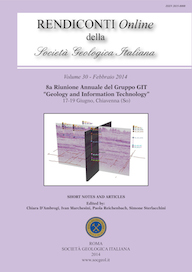
Use of scatterometer data in groundwater vulnerability assessment
Stefania Stevenazzi (a), Marco Masetti (a), Son V. Nghiem (b) & Alessandro Sorichetta (c)
(a) Dipartimento di Scienze della Terra "A. Desio", Università degli Studi di Milano, Via L. Mangiagalli 34, 20133 Milan, Italy E-mail: stefania.stevenazzi@unimi.it
(b) Jet Propulsion Laboratory, California Institute of Technology, 4800 Oak Grove Drive, La Cañada Flintridge, 91011 CA, USA
(c) European Commission, Joint Research Centre, Institute for Environment and Sustainability, Via E. Fermi 2749, 21027 Ispra (VA), Italy
DOI: https://doi.org/10.3301/ROL.2014.10
Volume: 30/2014
Pages: 45-50
Abstract
Lombardy in Italy has been selected as a case study to evaluate the capability of the QuikSCAT - Dense Sampling Method (QSCAT-DSM) data in delineating urban extent, estimating rate of urban changes, and assessing aquifer vulnerability, in particular to investigate the relationship between land-use changes and groundwater contamination.
QSCAT-DSM data represent an innovative approach to delineate urban and interurban areas with satellite scatterometer data. Radar backscatter acquired by the SeaWinds scatterometer aboard the QSCAT satellite together with the DSM are used to identify and map surface features at a posting scale of about 1 km².
Through the spatial statistical methods Weight of Evidence (WofE), both urban changes given by QSCAT-DSM data and population changes in the decade of the 2000’s have been correlated to nitrate concentration trend in groundwater in the same time period.
Both analyses based on urban change and on population change lead to the same result: urban nitrate sources in Lombardy increase the level of nitrate concentration in groundwater, indicating a degradation of the water quality. Moreover, QSCAT-DSM data proved to be a reliable tool for evaluating urban changes continuously without a temporal or spatial gap, and to be a strategic variable allowing the assessment of groundwater vulnerability consistently throughout the decadal time scale.
Keywords
Get Full Text